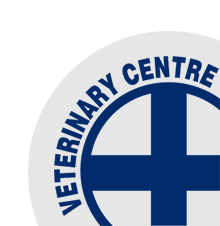Transport Certification Requirements
/The main areas that are highlighted for infringement involve the following conditions listed below. If the condition is more serious it can trigger the Welfare Act Legislation (1999, ultimately if you fall foul of this legislation it can lead to more serious ramifications: fines, jail time and prohibition from certain farming practices.
My general guidelines for issuing transport certification are:
Ingrown Horns (Regulation 38)
Ingrown horns must be inside the ears (<55cm) and not less than 3 weeks since dehorning.
Pointy horns can be a problem (even when inside the ears).
Horns which get broken during transport are viewed dimly, so it’s best to address the horns well before they need to be transported.
Debud those horned-Hereford weaners or Friesian bulls before spring.
Draft out cows with dodgy horns during pregnancy testing and get the vet to sort out at the end of the call.
Bleeding horns or antlers (Regulation 39)
Lameness (Regulation 40)
(relates to cattle, deer, pigs, sheep, and goats)
Sire bulls are particularly problematic because may freezing works will not kill bulls over 750kg liveweight. This means that they must be able to weight bear well enough to endure the 4hr journey to Mataura or Finegand.
Lame animals must be able to stand and weight bear on all limbs - lameness will be graded 1, 2 or 3.
Grade 3 non-weight bearing lameness cases are a no.
Grade 2’s can go if there are conditions attached to the vet certificate: closest works, last on first off, lower deck etc.
Healed broken legs are an awkward one. These have recently been spotlighted as not being accepted for transport – even though they may now be ok for transport. This is done to not condone the neglect of injured animals in the hope they might come right one day. Proof of appropriate care is needed to be able to send them to the works.
The tricky bit with lameness is that the animal must not have suffered unreasonable or unnecessary pain or distress during transport and not have physically deteriorated during transport or in the holding yards.
Sheep lameness. If you have got lines of sheep that need to be culled for lameness they can go the works with a veterinary certificate. However, any non-weight bearing or emaciated sheep are excluded.
Late term pregnancy (Regulation 41)
If a cow gives birth in transit or in the yards at the works, it’s an instant $500 fine.
Injured or diseased udders (Regulation 42)
These come under the category of wounds and bleeding/ discharging skin. No wounds which are bleeding or discharging pus.
No moist or fly struck maggoty bits. Chronic crusty skin is ok - mostly. Shearing cuts, acute mastitis and dog bites are not acceptable to transport to the works.
Eye cancer (Regulation 43)
Cancer eyes can go with certification provided they are within size limits and have not spread to involve the bone or lymph nodes and are not bleeding or discharging pus. Taking the eye out or stitching the eyelids may also be a valid solution in some cases.
Visibly sick animals with sunken eyes or fevers are a no go.
Johnes cases can mostly go if they meet body condition score requirements, but weak emaciated cases are a no. I know it is a fitness for transport, not fitness for human consumption assessment, but it seems pragmatic to consider this fact and ask the question “would you be happy to eat it”.
A veterinary transport certificate is a legal document and as vets we accept responsibility for the animals condition when it reaches the processors. If animals with these conditions were transported without a discretionary veterinary certificate it would be an offence under the Animal Welfare Regulations. Many of these animals can be transported after a veterinary assessment and a fitness for transport certificate can be issued, with some conditions placed on it. For marginal cases if we have talked to the plant vet they can inspect the animal at the works end.
Videos can be used at access the animal in some cases, but it is best to get on farm and see the animal, we can then give you the completed hard copy of the transport certificate.
If you think an APP is the solution to every life problem, then there is the MPI FIT FOR TRANSPORT App which you can download for free. Otherwise talk to a vet if you have doubt in your mind about what can or can’t go on the truck.
Certificates are valid for 7 days which is tough enough I know. Get your works space sorted before the vet gets there is ideal.





